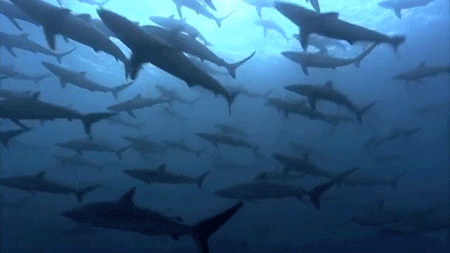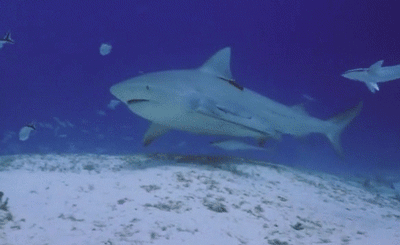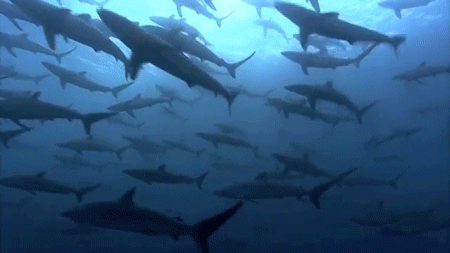I Never Take Selfies Let Alone Smiling Selfies And I’m Hardly Ever Happy. Lemme See If This Actually
I never take selfies let alone smiling selfies and I’m hardly ever happy. Lemme see if this actually works
More Posts from Curiositytherover and Others
Neptune-size exoplanet around a red dwarf star
Goleta CA (SPX) Nov 27, 2015 A team of astronomers have used the LCOGT network to detect light scattered by tiny particles (called Rayleigh scattering), through the atmosphere of a Neptune-size transiting exoplanet. This suggests a blue sky on this world which is only 100 light years away from us. Transits occur when an exoplanet passes in front of its parent star, reducing the amount of light we receive from the star Full article

We pulled together the week’s top tech stories, just for you:
1. Formula E is planning the first racing series for driverless cars You read that right: Before every Formula E race, two autonomous vehicles will go head-to-headlights, in a race straight out of every Sci-Fi fan’s wildest dreams. via: @engadget
2. How Technology Will Transform Retirement Someday in the near future, being selfish and obsessed with technology might be qualities that senior citizens praise today’s Millennials for. All around the world, young people are hard at work creating technology that will take care of them when they’re older. via: The Wall Street Journal
3. Who’s going to fly those Amazon delivery drones? The short answer is, probably no one. Which is for the best, really. After all, the real reason we don’t have flying cars is because people are bad drivers. And adding a z axis would be like trying to navigate rush-hour traffic in midair. via: ZDNet
4. Wayfindr Is on a Quest to Optimize Cities for the Visually Impaired After a successful experiment at London’s Pimlico Station and a recently received grant of $1 million from Google.org, this company wants to change the way visually impaired commuters navigate the London Underground. via: @wired


We’ve hit peak drone everyone.
Introducing: The delivery drone for humans.

NASA Suspends Next Mission to Mars
ASA will not launch its InSight spacecraft to Mars in March as originally planned, because of a leak in a French-built seismometer that is the spacecraft’s primary scientific instrument.
Technicians at CNES, the French space agency, have worked for months to repair a leak in a vacuum seal on the seismometer. OnDecember 22, NASA announced that it would suspend the launch. The delay means that InSight will not go off in 2016, but will have to wait 26 months until the Earth-Mars orbital geometry is once again favourable for launching a mission to the red planet.
InSight’s goal is to probe the structure of the Martian interior by listening to how marsquakes ring through the planet. The mission was designed to determine the size, composition and state of the planet’s core, mantle and crust, which no previous Mars mission has done.
Read more ~ Scientific American
Image: Flaws in the seismometers (at left, in the container on the ground) for NASA’s next Mars lander, InSight, will delay the mission’s launch by at least two years. Credit: NASA/JPL-Caltech
Splish, Splash, Orion Takes a Bath
The Orion spacecraft is a capsule built to take humans farther than they’ve ever gone before, to deep space and eventually Mars. But before astronauts travel inside this new vehicle, we have to perform tests to ensure their safety.

One of these tests that we’ll talk about today simulates an ocean splashdown. Water impact testing helps us evaluate how Orion may behave when landing under its parachutes in different wind conditions and wave heights. The spacecraft has been undergoing a series of these tests at our Langley Research Center’s Hydro Impact Basin…which is our fancy way of saying pool.

The test capsule, coupled with the heat shield from Orion’s first spaceflight, swung like a pendulum into Langley’s 20-foot-deep basin on Aug. 25.

Inside the capsule were two test dummies – one representing a 105-pound woman and the other, a 220-pound man — each wearing spacesuits equipped with sensors. These sensors will provide critical data that will help us understand the forces crew members could experience when they splash down in the ocean.
This specific drop was the ninth in a series of 10 tests taking place at Langley’s Landing and Impact Research Facility. It was designed to simulate one of the Orion spacecraft’s most stressful landing scenarios, a case where one of the capsule’s three main parachutes fails to deploy. That would cause Orion to approach its planned water landing faster than normal and at an undesirable angle.
Under ideal conditions, the Orion capsule would slice into the water of the Pacific Ocean traveling about 17 miles per hour. This test had it hitting the pool at about 20 mph, and in a lateral orientation. Instead of being pushed down into their seats, astronauts in this scenario would splashdown to the side.
With this test’s success and one final drop in this series scheduled for mid-September, researchers have accumulated a lot of important information.
To find out more, visit nasa.gov or follow @nasaorion on Tumblr, Twitter and Facebook.
Make sure to follow us on Tumblr for your regular dose of space: http://nasa.tumblr.com

Cryovolcanoes: Meet the Frozen Volcanoes on Pluto
Scientists spotted a possible ice volcano on the surface of Pluto. At about 90 miles (150 kilometers) across and 2.5 miles (4 kilometers) high.
Scientists have assembled the highest-resolution color view of one of the cryovolcanoes.
If confirmed, it would be the largest such feature discovered in the outer solar system. More at: http://go.nasa.gov/1mYCtyZ

It’s not (completely) your fault. -ScienceAlert

Physicists Discover A New Phase of Matter
Physicists discover a new phase of matter that exhibits superconductivity at high temperatures and could lead to new battery developments for electronic devices.
Read more at: http://futurism.com/links/physicists-discover-a-new-phase-of-matter/
Where did the stars go?
One day, you find time to get out of the clutches of your work life and you decide to gaze at the stars.
Something which you used to do when you were a kid.
But the city life with all its glory has diverted you to other ‘fun’ things.

But to your amazement you find that the density of stars has drastically decreased.
‘That’s preposterous’- you say to yourself. That can’t be true.
You are positive that it has something to do with you aging.

You decide to go to your eye doctor and do a thorough check up. The doctor concludes that your eye sight is perfect.

You are delighted, knowing that your eye sight is perfect and that you are going to see those stars again. You spend all day lamenting about it.
You crave for the starry night sky. And you are sure it would look like so :

So, the following night you go to the terrace to rejoice at the sight. But yet see that the sky is not starry at all as you had marveled.
In fact, there is a stark difference between what you had in mind and what you observe.

You get increasingly concerned about it. You ask a few people around and you find out that the answer to this mysterious phenomenon is Light Pollution..
And you start to explore this new bizarre form of pollution.
What is Light Pollution?
Alteration of natural light levels in the outdoor environment owing to artificial light sources.
What does it do?
The impact of light pollution is to reduce our eye’s limiting magnitude. That means that we can see fewer and fewer stars.

The differences in the number of stars that can be seen due to varying levels of background light pollution.
Light pollution competes with starlight in the night sky for urban residents, interferes with astronomical observatories, and, like any other form of pollution, disrupts ecosystems and has adverse health effects.
Light pollution is a side effect of industrial civilization. Its sources include building exterior and interior lighting, advertising, commercial properties, offices, factories, streetlights, and illuminated sporting venues.
How can I prevent it?
(Light Pollution and How to Reduce It)
The solution does not involve curtailing nightlife, hampering the nighttime economy or compromising safety. It just requires directing lights where they’re needed and eliminating waste.
Here what you can do prevent light pollution.
1) Only turn on outdoor lights when needed—or install motion sensors.

2) Point the lights downward and outfit them with “shields” to prevent light from traveling sideways. The goal is to shine them only where illumination is wanted—not in people’s eyes or on other people’s property (a case of “light trespass”).

3) Lower the wattage of your bulbs and put them on dimmers. Bright lights and dark shadows don’t improve safety, but reduce it.

4) Close curtains at night to keep indoor light in. If you live in a multi-story building, use black-out curtains to prevent bird crashes.

And, of course, please use energy-efficient lights to cut global warming emissions even more than you’ll be doing already.
Inspiration :
Here’s what the night sky looks now, with light pollution.

And here’s how it will look like without it.

This post is to educate all the followers of the blog about Light Pollution, and raise awareness about it.
“Stars can’t shine without Darkness”
and hence i urge you to do your part to curbing Light Pollution.
Have a good day :)
PC: NASA, classroomclipart, Umut Siliman, eschooltoday,medscape



Why music might be killing sharks
For too long, sharks have been portrayed and perceived as the menacing, lurking creatures in the deep. Contrary to popular belief, we are much more of a threat to them than they are to us.
Researchers have found that the ominous music that often accompanies even documentary footage of them has inspired excessive fear about sharks.
In an experiment at UC San Diego, participants watched footage of sharks. Some scenes featured uplifting music, and others had a more daunting score.
The effect was what you might expect. Viewers saw sharks as intimidating creatures when they they also heard ominous music.
But with uplifting music (or none at all), viewers had a more positive impression of sharks.
This is problematic because rarely do we see shark footage without the ominous music, and the negative portrayals of sharks may be hindering conservation efforts.
“We know from prior research that conservation progress for sharks is sluggish compared to marine mammals and that this slow response may be due in part to the societal marginalization of sharks,” says study co-author Elizabeth Keenan.
After all, in the words of Senegalese conservationist Baba Diou, “we will conserve only what we love.”
And while they’re still not exactly a furry, cuddly rabbit, consider this: you’re more likely to be struck by lightening than fall prey to a fatal shark attack.

-
 1habio reblogged this · 8 years ago
1habio reblogged this · 8 years ago -
 1habio liked this · 8 years ago
1habio liked this · 8 years ago -
 curiositytherover reblogged this · 8 years ago
curiositytherover reblogged this · 8 years ago -
 rainbow69siege liked this · 8 years ago
rainbow69siege liked this · 8 years ago